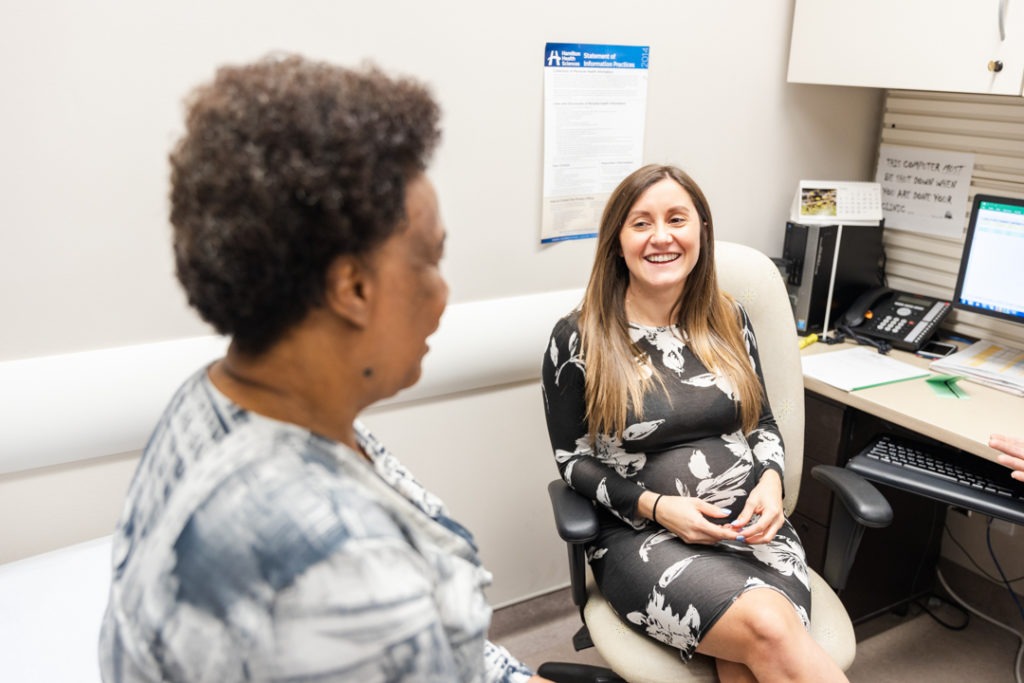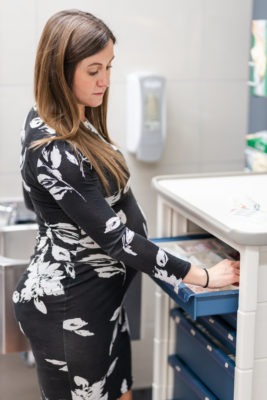
Introducing… a physician assistant
Treating chronic pain is not an easy task. And for patients suffering anything from back pain to pain in the joints to nerve pain, even by-products like anxiety and depression, the team at Hamilton Health Sciences’ (HHS) Michael G. DeGroote Pain Clinic are often their last hope.
Jaclyn De Azevedo, a physician assistant in the clinic based at McMaster University Medical Centre, takes pride in her role and is regularly motivated by the patients she sees every day.
“Adult patients living with chronic pain come to us because they sometimes don’t know where else to turn, and the pain, whether physical or emotional, takes such a toll on them,” says Jaclyn, a five-year employee at HHS.
“We help address substantial challenges facing patients who need timely access to quality health care services.”
The health care professionals on her team specialize in managing and treating chronic pain. Even further, they give patients the tools they need to care for themselves and improve their quality of life.
Jaclyn is in awe of the work her colleagues do to care for people living with such debilitating pain.
“Everyone around me is so passionate about their roles in the clinic and being able to help those patients in need around us is such a rewarding experience,” she says.
What does a physician assistant do?
Jaclyn’s role may sound like she is simply responsible for keeping a doctor’s day in working order. But it’s a lot more than that.
As a graduate of University of Toronto’s Bachelor of Science physician assistant program, she came to work for HHS right away.
 During a typical day, physician assistants work with one or more of the pain doctors in the clinic. They assist with new patient consultations, follow-ups and minor procedures.
During a typical day, physician assistants work with one or more of the pain doctors in the clinic. They assist with new patient consultations, follow-ups and minor procedures.
When a patient has a follow-up, Jaclyn checks to make sure they are progressing well since their previous visit.
“We do continual follow-ups until we reach a time where they can be repatriated back to their family doctor,” she says.
But the responsibilities of a physician assistant vary depending on the medical setting, the scope of practice of the doctor they work with and the laws of the province in which they practice.
“We help address substantial challenges facing patients who need timely access to quality health care services,” says Jaclyn.
“The collaborative approach between the doctor and someone in my position reduces the doctor’s workload allowing them to focus their efforts where needed.”
What led to becoming a physician assistant?
Becoming a physician assistant carried some uncertainty for Jaclyn. It’s a relatively new health profession in this country so it was natural for her to question whether it was the right field to enter.
“I chose this for my career because of the flexibility it offers,” says Jaclyn. “It allows me the opportunity to work in various areas of health care under the scope of a supervising physician.”
“I liked the idea that I could act as an extension of a doctor and open the door for more patients to access the quality of care we offer in our clinic.”
